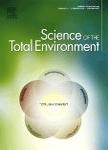版权所有:内蒙古大学图书馆 技术提供:维普资讯• 智图
内蒙古自治区呼和浩特市赛罕区大学西街235号 邮编: 010021

作者机构:Univ Calif Riverside Dept Environm Sci Riverside CA 92521 USA
出 版 物:《SCIENCE OF THE TOTAL ENVIRONMENT》 (整体环境科学)
年 卷 期:2017年第601卷
页 面:1139-1146页
核心收录:
学科分类:0830[工学-环境科学与工程(可授工学、理学、农学学位)] 08[工学]
基 金:Superfund Research Program of the National Institute of Environmental Sciences [R01ES020921 R01ES024313]
主 题:ΣDDT total bioavailable DDT ADD average daily dose of ΣDDT from fish ASF age slope factor BLMC breast milk lipid concentration of ΣDDT BMF biomagnification factor BMI bw body weight-normalized breast milk ingestion rate during the first year of life BSAF biota-sediment accumulation factor C f concentration of ΣDDT in White croaker C p concentration of ΣDDT in polychaete C s ΣDDT concentration in sediment CAPCOA California Air Pollution Control Officers Association CSF cancer slope factor DDT 1,1,1-trichloro-2, 2-bis ( p -chloro-phenyl) ethane EF exposure frequency GI gastrointestinal absorption fraction HOCs hydrophobic organic contaminants IDM Isotope Dilution Method Ifish sport fish ingestion rate LACSD Los Angeles County Sanitation District OEHHA California Environmental Protection Agency Office of Environmental Health Hazard Assessment PVS Palos Verdes Shelf SQO sediment quality objective TOC total organic carbon content USACE US Army Corps of Engineers USEPA United States Environmental Protection Agency V f lipid fraction in the tissue of White croaker V p lipid fraction in polychaete tissue
摘 要:Calculating risk from sea food exposure to persistent organic pollutants continues to be problematic as estimates of exposure from diet require extensive monitoring of fish species and limited assessments of bioavailability from sediments where the contaminants tend to reside. Previous studies in our laboratory utilized a laboratory-based isotope dilution method (IDM) to estimate the bioavailability of DDT [1,1,1-trichloro-2, 2-bis(p-chlorophenyl) ethane] and its metabolites from sediment to biota froma superfund site on the shelf of the Palos Verdes (PVS) Peninsula in California (USA). Using a biota-sediment accumulation factor (BSAF) derived from IDM and biomagnification factors (BMF) calculated from previous studies as well as seafood-consumption data specific to anglers in the PVS area, we estimated cancer and non-cancer risks for anglers and nursing infants representing sensitive groups. Predicted cancer risks from consumption of White croaker (Genyonemus lineatus) to the 50th and 95th percentile to all shore mode anglers were, respectively, 2 x 10(-7) and 7 x 10(-7), which were similar (t)o field studies using fish concentrations of all DDT isomers and their environmental degradates (SDDT) from collected animals. The calculated non-cancer hazard quotient values for the 50th and 95th percentile shore mode anglers consuming White croaker from this study (0.008 and 0.023, respectively) were also of similar magnitude as those obtained from studies based on samples obtained solely from fish. For nursing infants, similar results were also observed. These results indicate that estimates of bioavailability using IDM from sediment could be used accurately to determine risk to SDDT in humans from fish consumption. (C) 2017 Elsevier B. V. All rights reserved.